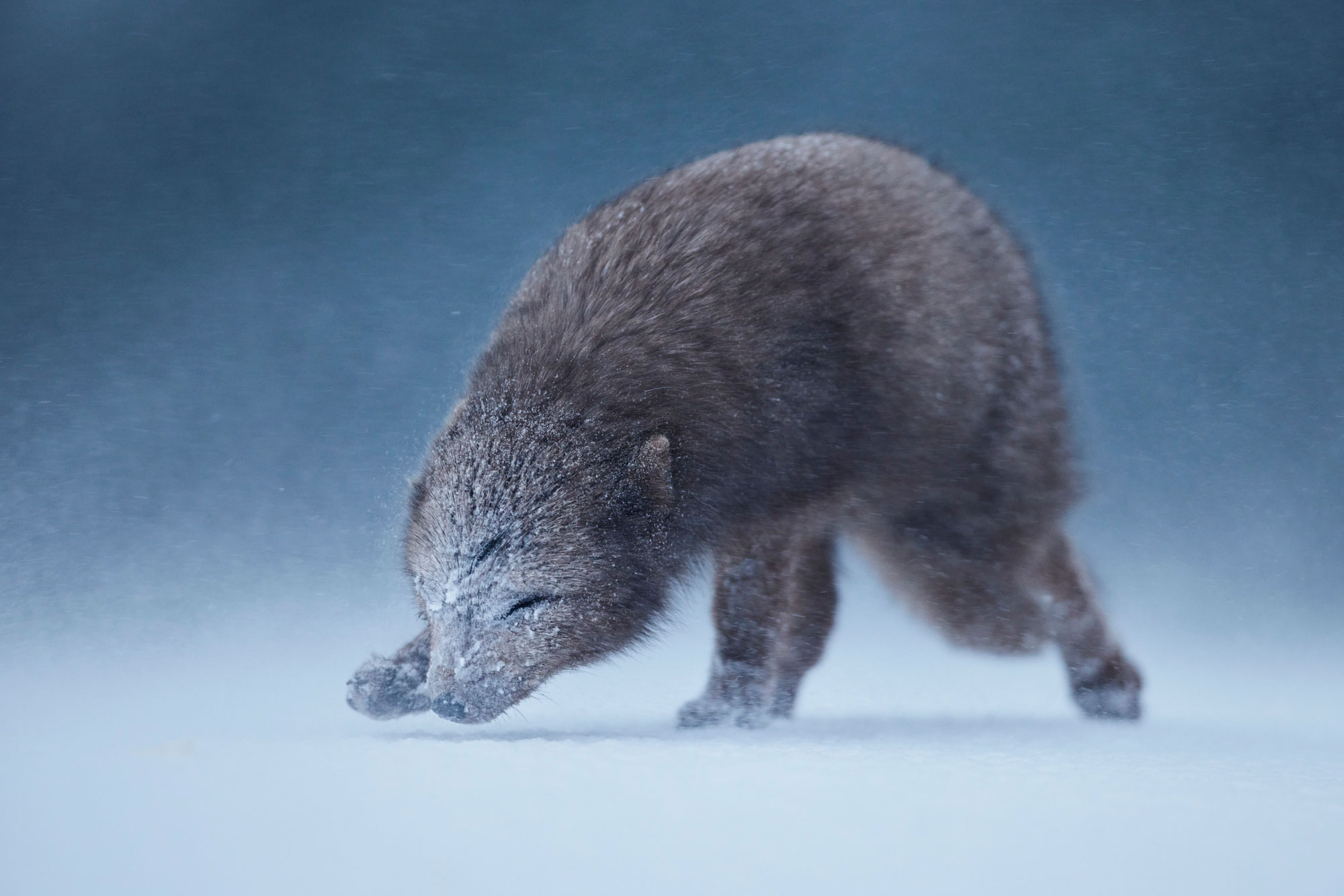COAST & SNOW
The remote Hornstrandir peninsula situated in the West Fjords of Iceland is home to a healthy population of the iconic Arctic fox. The population is estimated to be 8,000 – 10,000 throughout Iceland (depending on the time of year) with two colour morphs, the “white” and the “blue”. In Iceland, the blue colour morph is the dominant of the two with much of the population distributed in coastal areas.
The opportunistic mammals use their keen sense of smell to scavenge a variety of fish, dead seabirds and crustaceans washed ashore in the intertidal zone. When the tide is low enough, they can regularly be spotted on beaches routing around amongst dark rocks and seaweed. At high tide, they will seek higher terrain where they can be observed in the breathtaking Icelandic snow-covered environment.
Like many other foxes, they live in a skulk (small group) with a dominant male and female. Arctic foxes are monogamous and will mate for life or until one of them passes away. In summer, seabirds breed on cliffs, so food is abundant with plenty of eggs and young chicks for the Arctic fox to feed their young cubs.
During the winter months, the blue morph Arctic foxes brown-charcoal coloured thin summer coats become much thicker to adapt to the seasonal changes. In comparison to their red fox cousins, they have much smaller rounder ears, a shorter snout and smaller overall body size. This makes them much more adapted to a colder and harsher winter conditions, while giving them a bearlike appearance. They’re incredibly hardy animals easily withstanding the worst of the Icelandic winter conditions.
The remote Hornstrandir peninsula situated in the Westfjords of Iceland is home to a healthy population of the iconic Arctic fox. The population is estimated to be 8,000 – 10,000 throughout Iceland (depending on the time of year) with two colour morphs, the “white” and the “blue”. In Iceland, the blue colour morph is the dominant of the two with much of the population distributed in coastal areas.
The opportunistic mammals use their keen sense of smell to scavenge a variety of fish, dead seabirds and crustaceans washed ashore in the intertidal zone. When the tide is low enough, they can regularly be spotted on beaches routing around amongst dark rocks and seaweed. At high tide, they will seek higher terrain where they can be observed in the breathtaking Icelandic snow-covered environment.


































































